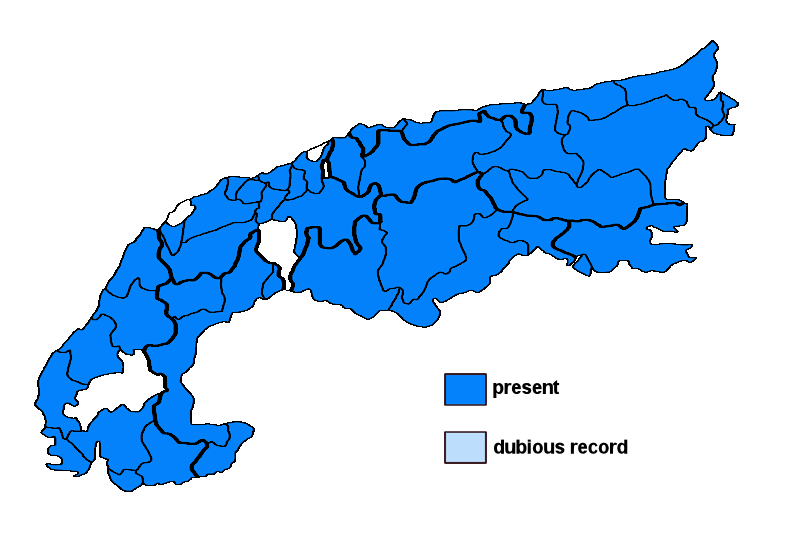Bilimbia sabuletorum (Schreb.) Arnold var. sabuletorum
Syn.: Bacidia borborodes (Körb.) Lettau, Bacidia descendens (Stizenb.) Mig., Bacidia hypnophila (Turner ex Ach.) Zahlbr., Bacidia propinqua (Stizenb.) Arnold, Bacidia sabuletorum (Schreb.) Lettau, Biatora propinqua Stizenb., Bilimbia borborodes Körb., Bilimbia hexamera De Not., Bilimbia hypnophila (Turner ex Ach.) Th. Fr., Lecidea hypnophila Turner ex Ach., Lecidea sabuletorum (Schreb.) Ach., Lichen sabuletorum Schreb., Mycobilimbia sabuletorum (Schreb.) Hafellner, Myxobilimbia sabuletorum (Schreb.) Hafellner
Lichenised.
Substrate: living mosses, plant debris, calciferous soil, lignum, bark
Altitudinal range: from the mesomediterranean belt (potential vegetation: evergreen broad-leaved forests dominated by Quercus ilex) to the alpine belt (potential vegetation: treeless Alpine grasslands and tundras, to the lower limit of perennial snow and the equilibrium line of glaciers)
Note: a holarctic, mainly temperate lichen found on mosses overgrowing soil and calciferous rocks, and tree bark, also in urban environments (e.g. on walls); widespread and locally common throughout the Alps.
Austria: Vorarlberg; Tirol; Salzburg; Kärnten; Steiermark; Oberösterreich; Niederösterreich (incl. Wien); Burgenland; Germany: Oberbayern; Schwaben; Switzerland: Bern; Glarus; Graubünden; Luzern; St. Gallen; Schwyz; Uri; Unterwalden; Vaud; Valais; France: Alpes-de-Haute-Provence; Alpes-Maritimes; Drôme; Isère; Savoie; Haute-Savoie; Vaucluse; Var; Italy: Friuli; Veneto; Trentino Alto Adige; Lombardia; Piemonte; Valle d'Aosta; Liguria; Slovenia: Alpine and Pre-Alpine Slovenia; Trnovsky Gozd;





